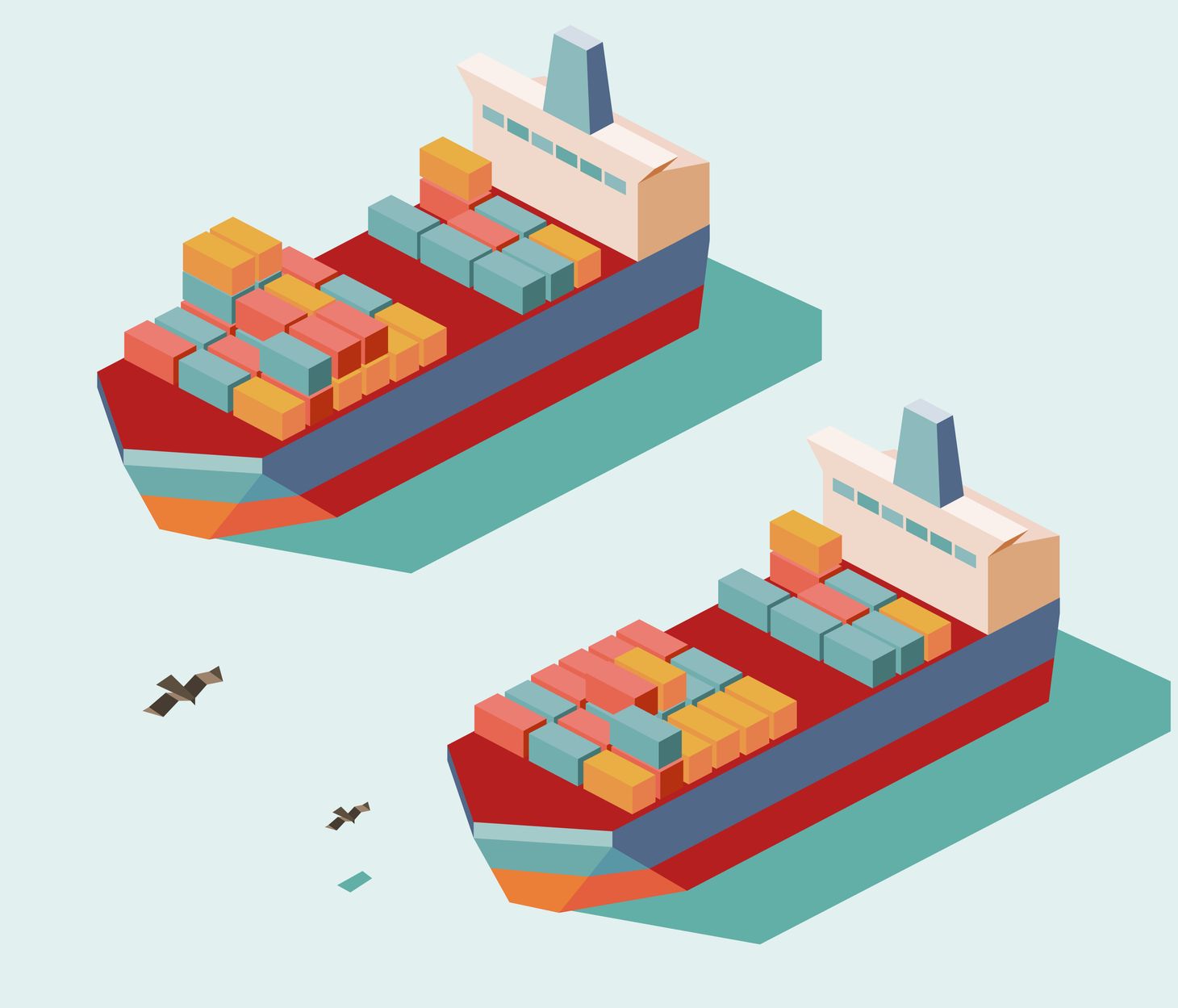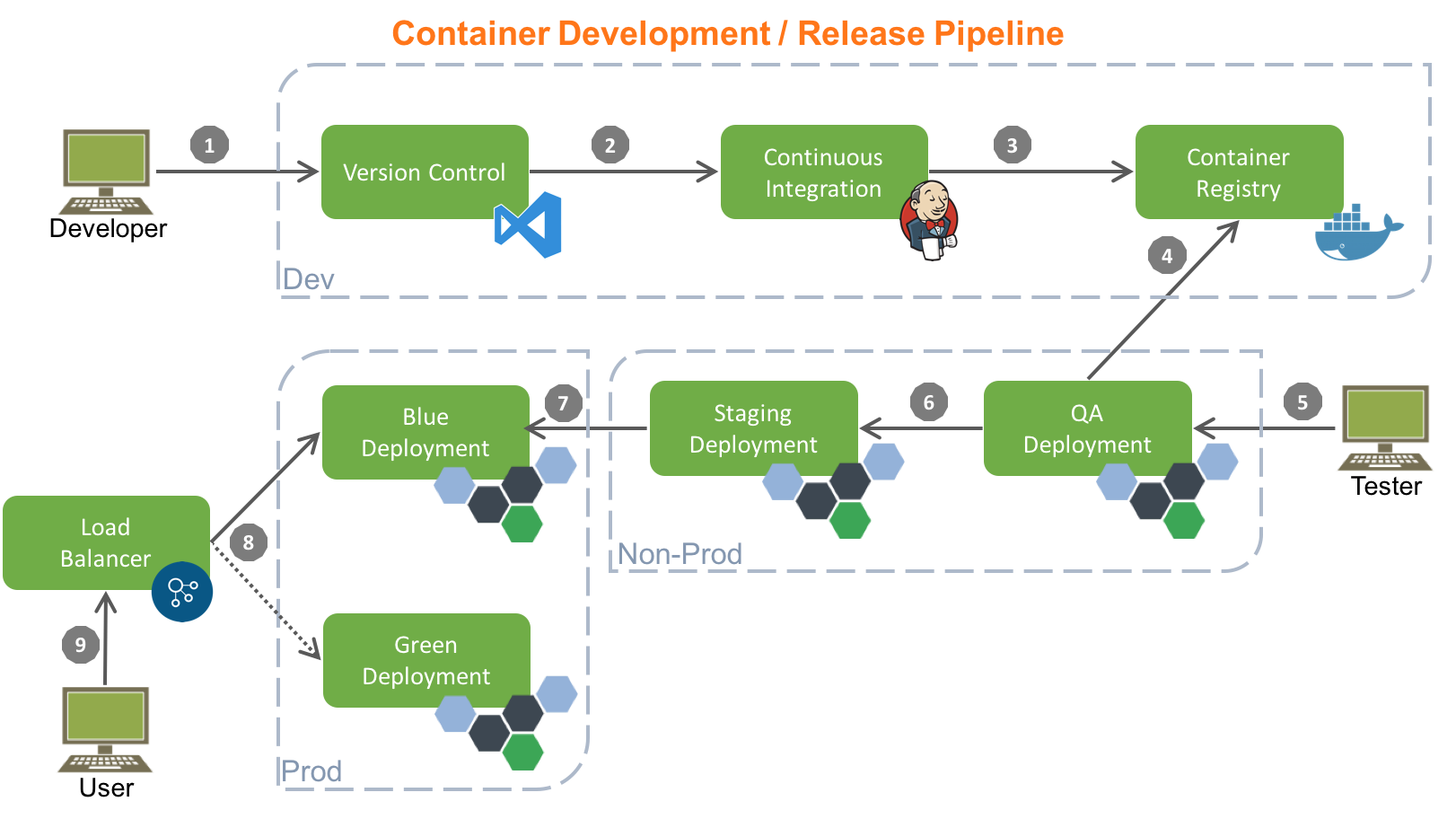Continuous Integration with Docker

One of the several benefits of using containers centers around your ability to build a container at the development stage, and promote it through each environment to production. This strategy keeps environments consistent throughout each environment, and allows close-to-production testing to be done earlier. Coupling this benefit with your existing Continuous Integration pipeline will provide a more consistent deployment process from beginning to end.

- Developer commits code to version control
- Continuous Integration tool (Jenkins) triggers on check-in, tests the changes, and builds a Docker Image
- Jenkins submits new version of Image to Registry
- Docker Container is built and executed on QA server for testing
- Testing begins in Non-Prod / Prod environments
- Container is promoted to Staging server after successful tests
- Container is promoted to “Blue” Production environment (non-live) after successful tests
- Container is promoted to “Green” Production release, after successful tests, and is live
- User access new functionality
Subscribe for Free
Want to stay ahead of the curve? Subscribe now to receive the latest updates, actionable insights, and thought-provoking ideas around business, technology, and leadership straight to your inbox.



